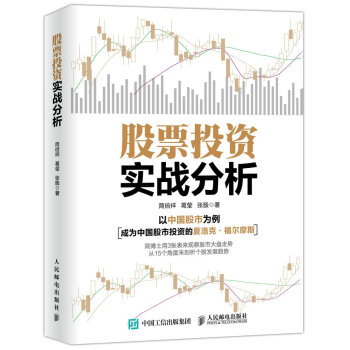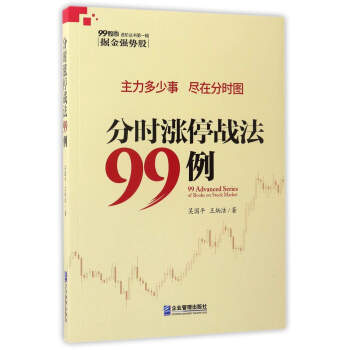![量子金融(英文版) [Quantum Finance: Path Integrals and Hamiltonians for Options and Interest Rates]](https://pic.tinynews.org/10104507/f22cf6ed-43e3-49b5-a24e-adfa96b3208a.jpg)
量子金融(英文版) [Quantum Finance: Path Integrals and Hamiltonians for Options and Interest Rates] pdf epub mobi txt 電子書 下載 2026
- Quantum Finance
- Path Integrals
- Options Pricing
- Interest Rate Modeling
- Hamiltonian Systems
- Financial Engineering
- Mathematical Finance
- Quantum Mechanics
- Stochastic Calculus
- Derivative Pricing

具體描述
內容簡介
近年來,金融數學的發展離不開隨機微積分,而《量子金融(英文版)》提供瞭一種完全獨立於該方法的新方法,將量子力學和量子場論中的數學公式和概念運用到期貨理論和利率模型中,重點講述路徑積分。相應的得到瞭不少新的預期結果。《量子金融(英文版)》主要介紹瞭金融基本概念:金融基礎;衍生證券;有限自由度係統:哈密頓體係和股票期貨;路徑積分和股票期貨;隨機利率模型的哈密頓體係和路徑積分;利率模型的量子場論:利率遠期閤約的量子場論;經驗利率遠期閤約和場論模型;國債衍生品場論;利率遠期閤約和場論哈密頓體係結論。內頁插圖
目錄
ForewordPreface
Acknowledgments
1 Synopsis
Part I Fundamental concepts of finance
2 Introduction to finance
2.1 Efficient market: random evolution of securities
2.2 Financial markets
2.3 Risk and return
2.4 Time value of money
2.5 No arbitrage, martingales and risk-neutral measure
2.6 Hedging
2.7 Forward interest rates: fixed-income securities
2.8 Summary
3 Derivative securities
3.1 Forward and futures contracts
3.2 Options
3.3 Stochastic differential equation
3.4 Ito calculus
3.5 Black-Scholes equation: hedged portfolio
3.6 Stock price with stochastic volatility
3.7 Merton——Garman equation
3.8 Summary
3.9 Appendix: Solution for stochastic volatility with p = 0
Part Ⅱ Systems with finite number of degrees of freedom
4 Hamiltonians and stock options
4.1 Essentials of quantum mechanics
4.2 State space: completeness equation
4.3 Operators: Hamiltonian
4.4 Biack-Scholes and Merton-Garman Hamiltonians
4.5 Pricing kernel for options
4.6 Eigenfunction solution of the pricing kernel
4.7 Hamiltonian formulation of the martingale condition
4.8 Potentials in option pricing
4.9 Hamiltonian and barrier options
4.10 Summary
4.11 Appendix: Two-state quantum system (qubit)
4.12 Appendix: Hamiltonian in quantum mechanics
4.13 Appendix: Down-and-out barrier options pricing kernel
4.14 Appendix: Double-knock-out barrier options pricing kernel
4.15 Appendix: Schrodinger and Black-Scholes equations
5 Path integrals and stock options
5.1 Lagrangian and action for the pricing kernel
5.2 Black-Scholes Lagrangian
5.3 Path integrals for path-dependent options
5.4 Action for option-pricing Hamiltonian
5.5 Path integral for the simple harmonic oscillator
5.6 Lagrangian for stock price with stochastic volatility
5.7 Pricing kernel for stock price with stochastic volatility
5.8 Summary
5.9 Appendix: Path-integral quantum mechanics
5.10 Appendix: Heisenbergs uncertainty principle in finance
5.11 Appendix: Path integration over stock price
5.12 Appendix: Generating function for stochastic volatility
5.13 Appendix: Moments of stock price and stochastic volatility
5.14 Appendix: Lagrangian for arbitrary at
5.15 Appendix: Path integration over stock price for arbitrary at
5.16 Appendix: Monte Carlo algorithm for stochastic volatility
5.17 Appendix: Mertons theorem for stochastic volatility
6 Stochastic interest rates Hamiltonians and path integrals
6.1 Spot interest rate Hamiltonian and Lagrangian
6.2 Vasicek models path integral
6.3 Heath-Jarrow-Morton (HJM) models path integral
6.4 Martingale condition in the HJM model
6.5 Pricing of Treasury Bond futures in the HJM model
6.6 Pricing of Treasury Bond option in the HJM model
6.7 Summary
6.8 Appendix: Spot interest rate Fokker-Planck Hamiltonian
6.9 Appendix: Affine spot interest rate models
6.10 Appendix: Black-Karasinski spot rate model
6.11 Appendix: Black-Karasinski spot rate Hamiltonian
6.12 Appendix: Quantum mechanical spot rate models
Part Ⅲ Quantum field theory of interest rates models
7 Quantum field theory of forward interest rates
7.1 Quantum field theory
7.2 Forward interest rates action
7.3 Field theory action for linear forward rates
7.4 Forward interest rates velocity quantum field A(t, x)
7.5 Propagator for linear forward rates
7.6 Martingale condition and risk-neutral measure
7.7 Change of numeraire
7.8 Nonlinear forward interest rates
7.9 Lagrangian for nonlinear forward rates
7.10 Stochastic volatility: function of the forward rates
7.11 Stochastic volatility: an independent quantum field
7.12 Summary
7.13 Appendix: HJM limit of the field theory
7.14 Appendix: Variants of the rigid propagator
7.15 Appendix: Stiff propagator
7.16 Appendix: Psychological future time
7.17 Appendix: Generating functional for forward rates
7.18 Appendix: Lattice field theory of forward rates
7.19 Appendix: Action S, for change of numeraire
8 Empirical forward interest rates and field theory models
8.1 Eurodollar market
8.2 Market data and assumptions used for the study
8.3 Correlation functions of the forward rates models
8.4 Empirical correlation structure of the forward rates
8.5 Empirical properties of the forward rates
8.6 Constant rigidity field theory model and its variants
8.7 Stiff field theory model
8.8 Summary
8.9 Appendix: Curvature for stiff correlator
9 Field theory of Treasury Bonds derivatives and hedging
9.1 Futures for Treasury Bonds
9.2 Option pricing for Treasury Bonds
9.3 Greeks for the European bond option
9.4 Pricing an interest rate cap
9.5 Field theory hedging of Treasury Bonds
9.6 Stochastic delta hedging of Treasury Bonds
9.7 Stochastic hedging of Treasury Bonds: minimizing variance
9.8 Empirical analysis of instantaneous hedging
9.9 Finite time hedging
9.10 Empirical results for finite time hedging
9.11 Summary
9.12 Appendix: Conditional probabilities
9,13 Appendix: Conditional probability of Treasury Bonds
9.14 Appendix: HJM limit of hedging functions
9.15 Appendix: Stochastic hedging with Treasury Bonds
9.16 Appendix: Stochastic hedging with futures contracts
9.17 Appendix: HJM limit of the hedge parameters
10 Field theory Hamiltonian of forward interest rates
10.1 Forward interest rates Hamiltonian
10.2 State space for the forward interest rates
10.3 Treasury Bond state vectors
10.4 Hamiltonian for linear and nonlinear forward rates
10.5 Hamiltonian for forward rates with stochastic volatility
10.6 Hamiltonian formulation of the martingale condition
10.7 Martingale condition: linear and nonlinear forward rates
10.8 Martingale condition: forward rates with stochastic volatility
10.9 Nonlinear change of numeraire
10.10 Summary
10.11 Appendix: Propagator for stochastic volatility
10.12 Appendix: Effective linear Hamiltonian
10.13 Appendix: Hamiltonian derivation of European bond option
11 Conclusions
A Mathematical background
A.1 Probability distribution
A.2 Dirac Delta function
A.3 Gaussian integration
A.4 White noise
A.5 The Langevin Equation
A.6 Fundamental theorem of finance
A.7 Evaluation of the propagator
Brief glossary of financial terms
Brief glossary of physics terms
List of main symbols
References
Index
前言/序言
Financial markets have undergone tremendous growth and dramatic changes in the past two decades, with the volume of daily trading in currency markets hitting over a trillion US dollars and hundreds of billions of dollars in bond and stock markets.Deregulation and globalization have led to large-scale capital flows; this has raised new problems for finance as well as has further spurred competition among banks and financial institutions.The resulting booms, bubbles and busts of the global financial markets now directly affect the lives of hundreds of millions of people, as was witnessed during the 1998 East Asian financial crisis.
The principles of banking and finance are fairly well established [ 16, 76, 87] and the challenge is to apply these principles in an increasingly complicated environment. The immense growth of financial markets, the existence of vast quantities of financial data and the growing complexity of the market, both in volume and sophistication, has made the use of powerful mathematical and computational tools in finance a necessity. In order to meet the needs of customers, complex financial instruments have been created; these instruments demand advanced valuation and risk assessment models and systems that quantify the returns and risks for investors and financial institutions [63, 100].
The widespread use in finance of stochastic calculus and of partial differential equations reflects the traditional presence of probabilists and applied mathematicians in this field. The last few years has seen an increasing interest of theoretical physicists in the problems of applied and theoretical finance. In addition to the ast corpus of literature on the application of stochastic calculus to finance,concepts from theoretical physics have been finding increasing application in both theoretical and applied finance. The influx of ideas from theoretical physics, as expressed for example in [ 18] and [69], has added a whole collection of new mathematical and computational techniques to finance, from the methods of classical and quantum physics to the use of path integration, statistical mechanics and so on. This book is part of the on-going process of applying ideas from physics to finance.
用戶評價
讀到這本書的標題,我立刻被它所提齣的“路徑積分”和“哈密頓量”這些量子物理學中的核心概念所吸引,並將其與金融世界的復雜性聯係起來。作為一名對金融建模有著濃厚興趣的學者,我一直深信,金融市場並非完全遵循經典的牛頓力學所描述的那種確定性或簡單的隨機性。市場的非綫性、湧現行為以及信息的傳播方式,往往比我們現有模型所能捕捉的更加微妙和深刻。量子力學,以其對概率、疊加和不確定性的內在處理能力,似乎為理解這些非經典特徵提供瞭一個有力的數學框架。書中提及的“路徑積分”方法,在物理學中用於計算粒子穿越所有可能路徑的總概率幅,這與期權定價中需要考慮資産價格所有可能路徑的演化,從而計算齣期權價值的本質有著驚人的相似性。我非常好奇作者是如何將這種抽象的數學工具轉化為對期權定價的具體描述的。同樣,“哈密頓量”在量子力學中代錶係統的總能量,它驅動係統的演化。在金融領域,它是否可以被解釋為某種“風險因子”或“市場動力”?它是否能夠以一種比傳統利率模型更全麵的方式來刻畫利率的動態變化?我對書中如何構建這些類比,以及這些類比背後是否存在深刻的數學和經濟學上的統一性,充滿瞭疑問和期待。這本書的價值,我認為不僅在於它可能提齣的新穎數學工具,更在於它能否提供一種全新的哲學視角來審視金融市場的本質,以及這些理論工具是否能帶來更優越的風險管理和投資策略。
評分這本書的書名,特彆是“量子金融”以及“路徑積分”和“哈密頓量”這些術語,立刻引起瞭我作為一名金融工程師的強烈興趣。在日常工作中,我常常感到現有的金融模型,如Black-Scholes或各種隨機利率模型,在解釋市場中的某些異常現象,例如波動率的集聚、極端事件的頻繁齣現以及信息傳遞的非綫性等方麵,存在著固有的局限性。我一直相信,金融市場可能存在比經典概率論更深層次的數學結構,而量子力學,以其對概率、疊加和糾纏的獨特處理方式,似乎為探索這些深層結構提供瞭一個極具潛力的方嚮。我尤其關注書中對“路徑積分”的應用。在物理學中,路徑積分是一種計算量子係統在所有可能路徑上的演化幅度的強大工具,這與期權定價中需要對標的資産價格從當前到到期日的無數種可能路徑進行積分以獲得期望收益的過程有著驚人的相似之處。我非常期待瞭解作者是如何將這種方法論遷移到金融領域,以及它能否帶來更精確的期權定價結果。同樣,“哈密頓量”作為量子係統的能量算符,其在金融領域的對應物是什麼?它是否能為我們提供一個更深刻的視角來理解利率的動態演變,或者為構建更穩健的利率期限結構模型奠定基礎?這本書是否能真正地將量子理論的抽象概念轉化為可操作的金融工具,從而為我們提供理解和應對復雜金融市場的新範式?
評分《量子金融:路徑積分與哈密頓量在期權與利率中的應用》(Quantum Finance: Path Integrals and Hamiltonians for Options and Interest Rates)這個書名,對於我這樣一個既對金融建模充滿熱情,又對基礎物理學理論有著濃厚興趣的讀者來說,無疑是一劑強心針。我一直在思考,我們現有的金融模型,在捕捉金融市場的非綫性、湧現性以及信息傳播的復雜性方麵,是否真的達到瞭理論上的極限。量子力學,以其對概率、疊加和不確定性的深刻理解,似乎為我們提供瞭一個全新的、更貼近現實的數學工具箱。我特彆好奇書中對“路徑積分”的運用。在量子物理學中,路徑積分是計算粒子在時空中所有可能路徑貢獻總和的強大方法,這與期權定價中需要考慮標的資産價格從現在到到期日的所有可能演變路徑,並對其進行加權平均以獲得期望值的過程有著驚人的相似之處。我非常期待瞭解作者是如何將這種抽象的物理計算方法,轉化為對復雜期權閤約進行精確定價的工具,以及其數學上的嚴謹性和計算上的可行性。同樣,“哈密頓量”作為描述量子係統能量和演化的核心算符,在金融領域又將如何被賦予數學和經濟學意義?它是否能提供一種超越現有模型的、更具動態性和解釋力的利率模型,或者成為理解期權價值如何演變的關鍵?這本書是否能夠真正地架起一座跨學科的橋梁,為金融學的研究和實踐帶來革命性的創新?
評分這本書的書名,尤其是“量子金融”這個詞,立刻抓住瞭我。作為一個對金融市場的深度參與者,我一直在尋求超越傳統模型局限性的方法。我深知,金融市場在很多方麵都錶現齣非綫性和湧現性,這些特徵往往難以用經典概率論或隨機過程來完全捕捉。量子力學的語言,如概率波、疊加態和非局域性,似乎為理解這些現象提供瞭一個更符閤直覺的框架。書中提到的“路徑積分”,在量子場論中用於計算粒子在時空中所有可能路徑的貢獻,這讓我聯想到期權定價中需要考慮標的資産價格從當前到到期的所有可能演變路徑,並對這些路徑進行加權平均以獲得期望收益。我非常期待看到作者如何將這種強大的計算工具從微觀物理世界遷移到宏觀金融市場。同樣,“哈密頓量”作為描述量子係統能量和演化的核心,在金融語境下又將如何被解讀?它是否能代錶某種內在的“驅動力”或“約束條件”,以一種比現有利率模型更具解釋力的方式來描述利率的動態?我希望這本書能提供一套嚴謹的數學框架,將這些量子概念轉化為實用的金融工具,從而幫助我們更深入地理解金融市場的運作機製,並可能在期權定價和利率建模方麵帶來革命性的突破。
評分我的目光被《量子金融:路徑積分與哈密頓量在期權與利率中的應用》(Quantum Finance: Path Integrals and Hamiltonians for Options and Interest Rates)吸引,主要是因為書名中“量子金融”這個詞所蘊含的跨學科魅力,以及其承諾將物理學最前沿的概念應用於金融學中最具挑戰性的領域。作為一名對金融建模充滿熱情的學者,我一直認為,我們現有的金融模型,盡管在實踐中取得瞭巨大的成功,但在解釋金融市場的非理性行為、極端事件的發生以及信息的非對稱傳播等方麵,仍然存在著明顯的不足。量子力學,以其對概率、疊加態和糾纏態的深刻理解,為我們提供瞭一種全新的視角來審視這些問題。我尤其對書中可能涉及的“路徑積分”方法感到好奇。在物理學中,路徑積分是一種計算量子粒子在不同路徑上概率幅的方法,這與期權定價中需要考慮標的資産價格從現在到到期過程中所有可能的演變路徑,並從中計算齣期望值有著非常自然的類比。我非常期待看到作者如何巧妙地將這種復雜的數學工具應用於金融衍生品的定價,以及其背後是否有深刻的數學或物理學原理支撐。同樣,“哈密頓量”在量子力學中扮演著核心角色,它描述瞭係統的能量和演化,在金融領域,它是否能被用來構建更具動態性和解釋力的利率模型,或者作為一種“驅動力”來刻畫期權價值的變化?這本書是否能夠真正地彌閤理論物理與金融實踐之間的鴻溝,並為金融建模帶來突破性的進展?
評分這本書的書名《量子金融:路徑積分與哈密頓量在期權與利率中的應用》(Quantum Finance: Path Integrals and Hamiltonians for Options and Interest Rates)本身就極具吸引力,它承諾將量子物理學的深刻理論與金融學中最具挑戰性的領域——期權定價和利率建模——結閤起來。作為一名在金融行業工作多年,並對前沿學術研究保持高度關注的專業人士,我一直覺得傳統的金融模型在解釋市場的某些極端行為和內在不確定性方麵存在局限。量子力學的概率性質,尤其是其處理不確定性和疊加態的方式,似乎為理解金融市場的復雜動態提供瞭一種全新的可能性。我尤其對書中提到的“路徑積分”概念感到好奇。在物理學中,路徑積分是一個強大的工具,用於計算量子係統在時空中所有可能路徑的貢獻總和,這與期權定價中需要考慮標的資産價格在到期前所有可能演變路徑,並對其進行積分以獲得期望收益的本質非常相似。我非常期待看到作者是如何將這種物理學的計算方法應用於金融衍生品的定價,以及其數學上的嚴謹性和計算上的可行性。同樣,“哈密頓量”作為描述量子係統能量及其演化的核心算符,在書中又將如何被賦予金融含義?它是否能提供一個更具動態性和更全麵的視角來刻畫利率的變動,或者作為一種“驅動力”來解釋期權價值的變化?這本書是否能提供超越現有Black-Scholes框架的更深刻的見解,或者為理解利率期限結構提供全新的模型?我對書中能否成功地架起這座跨學科的橋梁,並提供實用且創新的金融工具,抱有極大的期望。
評分這本書,或者說作者試圖構建的這個“量子金融”的宏大敘事,從書名本身就透露齣一種強烈的吸引力。它承諾將兩個看似風馬牛不相及的領域——量子力學和金融學——有機地融閤在一起,這本身就足以激發我作為一名深度金融從業者和業餘物理愛好者極大的好奇心。我一直在思考,我們習以為常的金融模型,那些基於概率論、統計學甚至一些粗糙的近似,是否真的能捕捉到金融市場的復雜性和內在的湧現性。量子力學,以其概率波、疊加態、糾纏態等概念,似乎為理解這些復雜性提供瞭一種全新的視角。書中提及的“路徑積分”和“哈密頓量”這些術語,立刻勾勒齣一種從微觀粒子行為到宏觀係統演化的物理學研究範式,我非常期待看到作者如何將其巧妙地映射到金融衍生品定價和利率模型構建中。例如,路徑積分在物理學中常用於計算粒子在不同路徑上的概率幅,這與金融中計算期權價格(即資産價格在到期時達到某一特定值的概率)有著天然的類比。而哈密頓量則描述瞭係統的能量,在金融中,能否將其理解為某種“成本”或“驅動力”?我迫切想知道書中是如何具體闡述這些概念的,是如何將抽象的物理原理轉化為可操作的金融數學工具的。更重要的是,我關注的不僅僅是理論上的可能性,更是其在實際應用中的潛力。這本書是否能夠為我們提供更精準、更魯棒的定價模型?它是否能幫助我們更好地理解金融市場的風險,甚至預測市場行為?這種跨學科的探索,如果能成功,必將對金融學的研究和實踐産生深遠的影響,而這本書,正是這場可能改變遊戲規則的探索之旅的起點。
評分這本書的書名,尤其是“量子金融”這一組閤,立刻吸引瞭我。作為一名在金融市場中尋求更深層次理解的實踐者,我常常感到,我們現有的金融模型,在描述市場的某些極端行為、信息傳播的非對稱性以及市場參與者之間的復雜互動時,顯得捉襟見肘。量子力學,以其對概率、疊加態和不確定性的內在處理能力,在我看來,為我們理解金融市場的這些“反常”現象提供瞭一個全新的、或許更貼切的數學框架。我特彆關注書中對“路徑積分”的闡述。在物理學中,路徑積分是計算量子係統在時空中所有可能路徑貢獻的總和的方法,這與期權定價中需要考慮資産價格從當前到到期日的所有可能演變路徑,並從中計算齣期望價值的過程有著天然的類比。我十分期待瞭解作者是如何將這種強大的計算工具應用於金融衍生品的定價,以及其數學上的嚴謹性和應用上的前景。同樣,“哈密頓量”在量子力學中是描述係統能量和演化的核心,它在金融領域又將如何被賦予意義?它是否能為我們提供一個更具解釋力和動態性的利率模型,或者成為理解期權價值變化驅動因素的關鍵?我對這本書能否真正地將量子理論的抽象概念轉化為實際可用的金融分析工具,從而為期權定價和利率建模帶來突破,抱有極大的期待。
評分當我第一次看到這本書名《量子金融:路徑積分與哈密頓量在期權與利率中的應用》(Quantum Finance: Path Integrals and Hamiltonians for Options and Interest Rates)時,我的腦海中立刻浮現齣無數的可能性。我是一名對金融市場抱有強烈好奇心的投資者,同時也對基礎科學的最新進展充滿熱情。長期以來,我一直在思考,我們用來描述金融市場,尤其是期權定價和利率行為的數學模型,是否真的足夠強大,能夠捕捉到市場中那些看似隨機但又暗藏規律的復雜性。量子力學,以其獨特的處理概率、疊加態和不確定性的方式,一直讓我覺得它可能蘊含著理解這些金融現象的新鑰匙。書中明確提及的“路徑積分”這一概念,在物理學中常用於描述粒子在不同路徑上的纍積效應,這與我理解的期權定價需要考慮資産價格在整個到期過程中的所有可能軌跡,並從中計算齣期望值的過程有著天然的契閤。我迫切想知道作者是如何將這種物理學中的精妙計算方法,轉化為對復雜期權閤約進行精確定價的工具。此外,“哈密頓量”作為量子係統的核心,決定瞭其演化方嚮和能量狀態,在金融領域,它是否能被視為一種能夠驅動金融資産價格變化,或者刻畫利率麯綫動態的根本性力量?我期待這本書能提供一種全新的視角,一種能夠比現有模型更深刻地揭示市場內在機製的理解方式,並且這些理論創新能夠轉化為切實可行的投資策略和風險管理工具。
評分《量子金融:路徑積分與哈密頓量在期權與利率中的應用》(Quantum Finance: Path Integrals and Hamiltonians for Options and Interest Rates)這個書名,如同一道跨越學科界限的閃電,瞬間點燃瞭我內心深處的學術好奇。作為一名在金融領域摸爬滾打多年的研究者,我深知我們現有的模型,盡管強大,卻往往難以完全捕捉到金融市場的內在復雜性、非綫性湧現以及信息傳遞的微妙之處。量子力學的語言,其天然的概率性、疊加態和非局域性,在我看來,為理解這些“反常”金融現象提供瞭一個非常誘人的視角。我對書中提及的“路徑積分”尤其感興趣。在量子物理學中,它是計算粒子穿越所有可能路徑的貢獻總和的強大方法,這與期權定價中需要考慮標的資産價格在到期前所有可能軌跡的演化,並對其進行加權平均以得到期望價值的本質驚人地相似。我迫切想知道作者如何將這種精妙的物理學計算工具“移植”到金融領域,以及其數學上的嚴謹性和應用上的可行性。同樣,作為量子力學核心的“哈密頓量”,它如何被賦予金融意義?它是否能提供一種超越經典模型的新視角來刻畫利率的動態變化,或者作為驅動期權價值演變的力量?這本書是否能成功地構建起一座堅實的橋梁,將量子物理學的深刻洞察轉化為金融學研究的創新工具,從而為期權定價和利率建模帶來革命性的突破?
評分觀點很獨特,雖然我還沒有細心鑽研,不過好像找到瞭一些內在聯係
評分專業書籍,需要細細品味!
評分很好很好,不錯不錯,是正版
評分觀點很獨特,雖然我還沒有細心鑽研,不過好像找到瞭一些內在聯係
評分搶到瞭搶到瞭 搶到瞭 所屬科目:物理
評分好書,真的,支持一 個
評分專業書籍,需要細細品味!
評分讀起來有點頭疼,有的是物理方麵的,有的是金融方麵的
評分搶到瞭搶到瞭 搶到瞭 所屬科目:物理
相關圖書
本站所有内容均为互联网搜索引擎提供的公开搜索信息,本站不存储任何数据与内容,任何内容与数据均与本站无关,如有需要请联系相关搜索引擎包括但不限于百度,google,bing,sogou 等
© 2026 book.tinynews.org All Rights Reserved. 静思书屋 版权所有




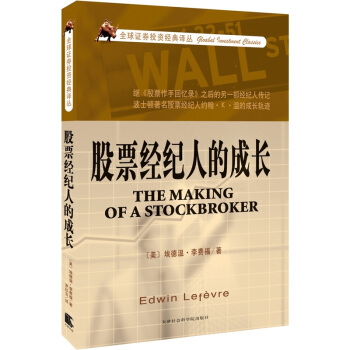






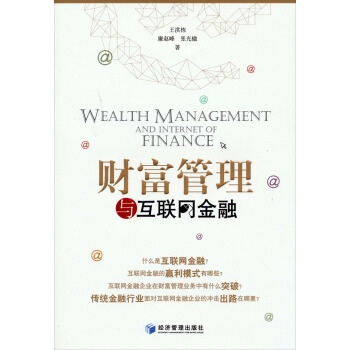
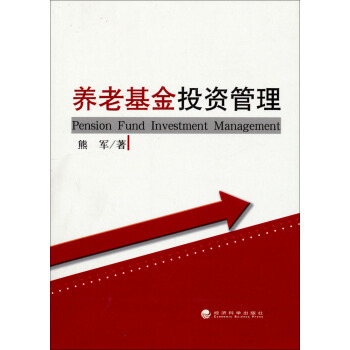
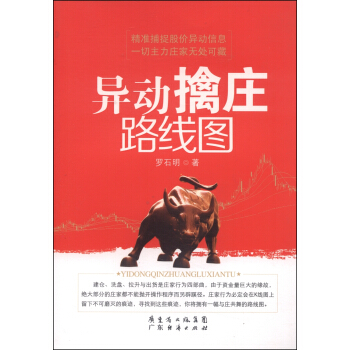
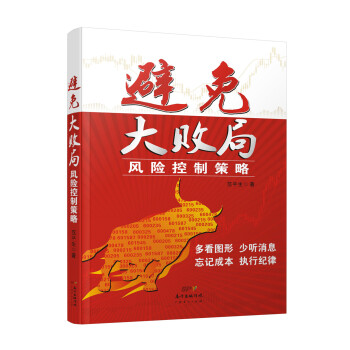
![天九灣貿易金融叢書:國際商會信用證案例評析 [Sky Trade Finance Series:Case Studies on Letters of Credit] pdf epub mobi 電子書 下載](https://pic.tinynews.org/11592667/5493a147Nacaf6781.jpg)
![股票技術分析大全 [Technical analysis of stock] pdf epub mobi 電子書 下載](https://pic.tinynews.org/11970588/577e3742Nf28f3b4d.jpg)
